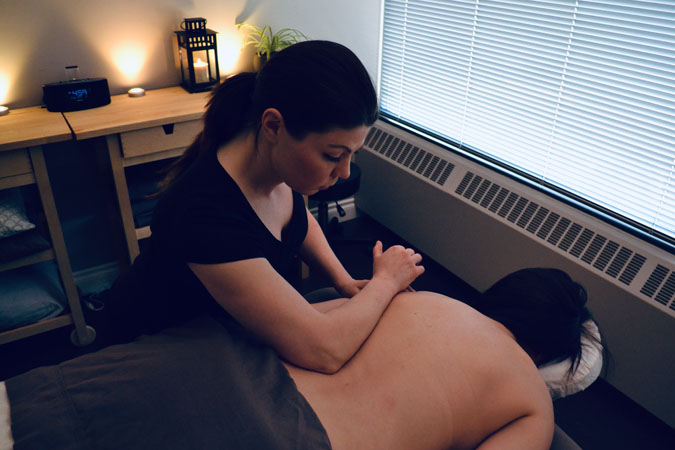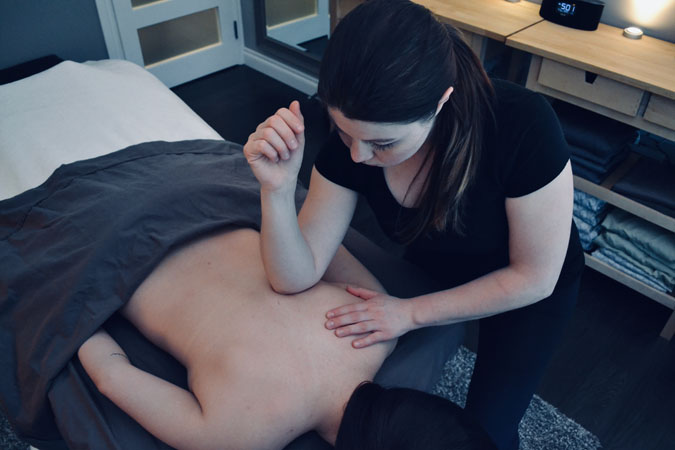DEEP TISSUE & THERAPEUTIC MASSAGE
Realigning Deeper Layers of Muscle & Connective Tissue
Therapeutic massage is characterized by its emphasis on working out adhesions, also known as “knots”, in the muscle tissue. More specifically, it focuses on realigning deeper layers of muscles and connective tissue.
- It is especially helpful for chronic aches and pains, and addressing contracted areas such as stiff neck and upper back, low back pain, leg muscle tightness, and sore shoulders.
- In therapeutic treatments, the movements are slower than relaxation treatments, and pressure is concentrated on areas of tension and pain in order to reach the sub-layer of muscles and the fascia (the connective tissue surrounding muscles).
Which Modalities Are Typically Used in a Therapeutic Treatment?
- Deep Tissue
- Trigger Point Therapy
- Myofascial Release
- Manual Lymphatic Drainage
- Sports Massage
- PNF Stretching
- Hydrotherapy
Deep Tissue Therapy in a Therapeutic Treatment
- When there is chronic muscle tension or injury, you will find adhesions (bands of painful, rigid tissue) in muscles, tendons, and ligaments. Adhesions (knots) can block circulation, cause pain, inflammation, and limit movement. Deep tissue treatments work by physically breaking down these adhesions to relieve pain and restore normal movement. To do this, the massage therapist uses direct, concentrated pressure. Muscles must be relaxed in order for the therapist to reach the deeper musculature.
- Not to be confused with a ‘deep pressure’ massage, a deep-tissue massage is a very focused, results-oriented treatment, suited for people who are experiencing consistent pain and/or have injured themselves physically. Your therapist will warm up the muscle tissue with Swedish massage strokes, and then work more specifically on any area of discomfort using their elbows, fingers, fists, and hands. In consultation with the client, a therapist may also devote an entire treatment to address the injured area, as opposed to giving a full-body treatment. It is very common to experience some tenderness in the worked area for up to 48 hours after your massage.
Summary of the Benefits of Therapeutic Treatments:
- Release of tension and stiffness from muscles, tendons, ligaments, joints and fascia
- Pain management
- Increased flexibility and suppleness
- Breaks down old scar tissue and adhesions
- Improved mobility, posture and physical performance
- Faster, more efficient recovery from injury and surgery
*It is important to remember that everyone has a different tolerance for deep work, so communication with your therapist throughout your treatment regarding your comfort is essential. If your body is resisting the pressure applied to it, the treatment is too deep, and you need to tell your therapist.



PRACTITIONER RECOMMENDATIONS
Depending on the severity of an injury or condition, your therapist could request that you return for a therapeutic treatment one to two times per week.
From a proactive standpoint, a monthly visit to address the buildup of tension and “knots” in your muscle tissue is highly recommended.
Preventative massage therapy is one of the most underrated forms of regular body maintenance. By receiving treatments on a regular basis, you can substantially reduce the risk of serious injury or the development of chronic pain.
